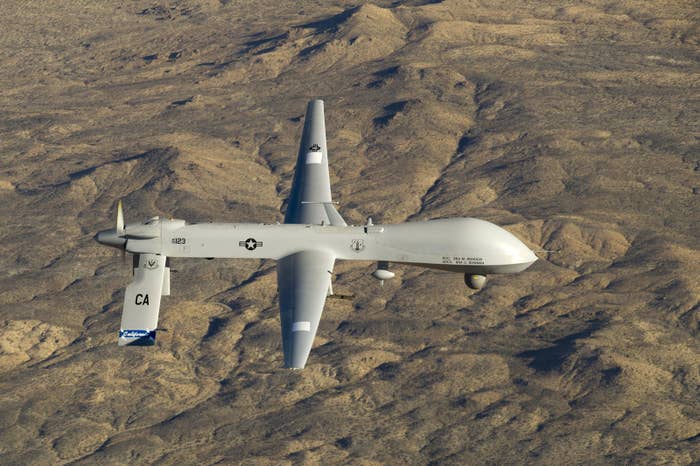
A new whistleblower has turned over a trove of documents related to the targeted killing program, providing new details into the way the drones that the United States flies operate.
The documents handed over by the source, who remains unnamed, to The Intercept include slides from targeted operations in Afghanistan, a previously unpublished report from the Pentagon on the problems with the drone program, and condensed packets of information about targets known colloquially as "baseball cards."
Much of the information presented in the trove was known in broad strokes — the U.S. has little idea of the identity of the people killed in drone strikes; those it is uncertain of are after the strikes often labeled as "enemies" despite having no verification of just who they were; armed drone strikes rely on intelligence that can easily be faulty. What the documents do is provide details into the process of just how the program operates, sometimes at a granular level.
U.S. officials, on the other hand, are dismissive of the importance of the documents. "It's clear that these materials are dated (May 2013 appears to be the most recent), and offer only a very narrow snapshot of these operations," one U.S. official told BuzzFeed News in an email.
The information provided in the leak dovetails with previous revelations about the way the U.S. military uses so-called "metadata" from cell phones to help track its targets. But, as The Intercept's source noted, the selectors — phone numbers and e-mail addresses being followed — can easily be wrong.
“It’s stunning the number of instances when selectors are misattributed to certain people," the source said. "And it isn’t until several months or years later that you all of a sudden realize that the entire time you thought you were going after this really hot target, you wind up realizing it was his mother’s phone the whole time.”
In one instance, according to documents from a mission in Afghanistan codenamed "Operation: Haymaker," the U.S. during one period launched 27 strikes against suspected militants. As a result, nineteen targets were killed, according to the slide below, with another 155 unnamed "enemies" killed in action.

When asked about the new leak, a senior administration official pointed to President Barack Obama's 2013 speech on counterterrorism operations, during which he said the U.S. would end the controversial practice of "signature strikes" — bombings based not on clearly identifying the subject, but patterns of behavior.
During that speech, the president "explained why the use of such strikes is just, legal, and necessary to protect the American people from the threat posed by terrorism, emphasizing that by narrowly targeting our action against those who want to kill us and not the people they hide among, we are choosing the course of action least likely to result in the loss of innocent life," the official said.
